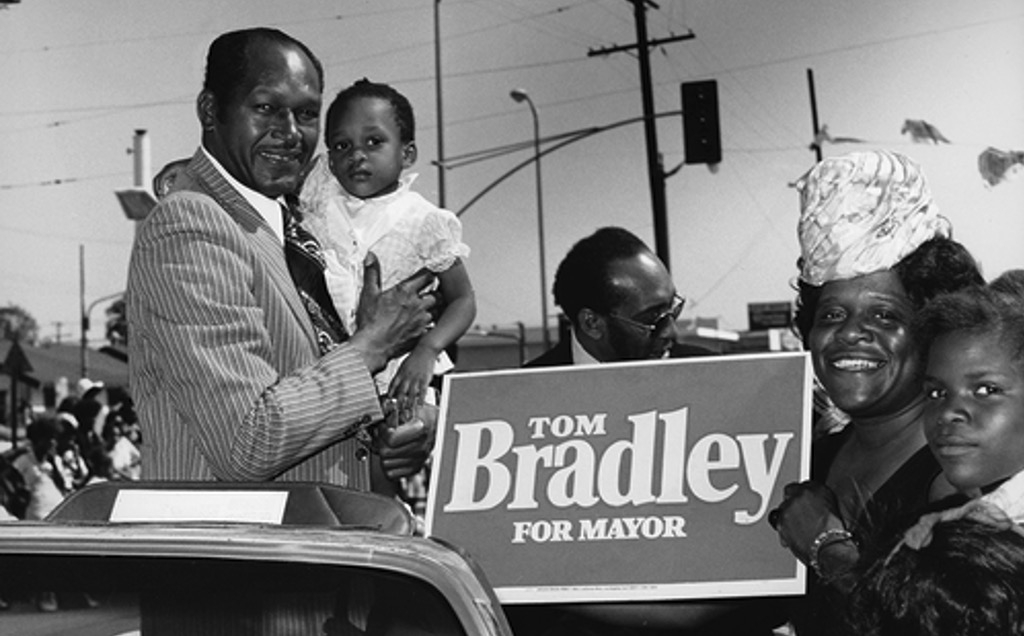VIEWPOINT – Los Angeles will hold elections for mayor in eight months—June 2, 2026, to be exact. Currently, aspirants for mayor number eight, according to the L.A. Ethics Commission website, and more are said to be interested in entering the race.
Some candidates are familiar, like the present mayor Karen Bass, and Austin Beutner, a businessperson and former superintendent of the Los Angeles Unified School District. Rick Caruso, billionaire and philanthropist, has not decided whether he will again seek the mayor’s post or run for California governor.
So, how then do we assess the current hodgepodge inventory, a confused assortment of perplexing names and unfamiliar attributes? To be a successful mayor in this mega city requires experiences and qualities of leadership, like those that were so evident in the days of Mayor Tom Bradley.
Mayor Bradley shaped modern Los Angeles. He was a man of vision and dreams, of quiet willpower, whose determination forged extraordinary coalitions, and who governed skillfully over a period of colossal growth, created a downtown skyline along with numerous other immense and tangible achievements. I was alongside the mayor as we embarked together on the long and difficult journey to bring a subway and light-rail system to Los Angeles.
Bradley guided the city’s transformation, built a multiethnic coalition, and fostered consensus among diverse leaders. His pivotal role broadened the diversity of the city’s workforce. Through his leadership, opportunities for minorities and women expanded, enabling their participation on city commissions and increasing the representation of Black and Latino men and women in management positions.
His legacy includes institutions like the Tom Bradley International Terminal at LAX , the Harbor, and his efforts to reform the Los Angeles Police Department. He surrounded himself with skilled and esteemed advisers, choosing commissioners who were loyal, capable and well-informed. Many of these individuals held strong reputations within their areas of expertise and had their own sphere of influence. He earned recognition and respect not just locally, but also in Sacramento, Washington, D.C., and around the world.
The planning phase for the first Metro Rail Segment started during Bradley’s first term. I was the relentless point man and chief advocate for the system, but Bradley was the true and genuine believer and trailblazer. He was fully aware that subways revolutionize the way people live and travel, how communities are connected and new economic opportunities are created, as well as how traffic congestion is reduced and air quality is improved.
In seeking better air quality, Bradley contested industrial and motor vehicle polluters, often appearing on televised news conferences against refiners and in the creation of the Smog-Check program with his friend Jim Birakos, known widely as Mr. Smog.
A tall, reserved, and dignified figure, very loyal to his friends, Bradley was not outspoken but preferred working behind the scenes. His manner on occasion earned him the nickname, “the Sphinx of City Hall.” Though known for his stoic nature, those close to him—as we were during our visit to Greece—witnessed his warmth, kindness and cheerfulness, a great human being.
It was during our journey to Athens in 1984 and the establishment of the Athens-Los Angeles Sister City Affiliation program where Bradley defused an Olympic Torch controversy raised by the mayor of Olympia over the so-called commercialization of the torch relay.
Los Angeles is now three years away from taking the world center stage as host of both the 2028 Summer Olympics and Paralympics, but will it be ready? Preparation and funding are still the troubling issues. The Los Angeles Olympics of 1984 were saved by Bradley who threatened to withdraw the city’s bid unless it was given freedom for financial liability, with the Los Angeles Olympic Organizing Committee being the primary financial body responsible for the Games. The IOC reluctantly withdrew its objections and ratified the contract under Bradley’s terms, withdrawing Rule 4. The Los Angeles Games made history.
When it came to the arts, Bradley was a visionary forerunner. In 1979 during a discussion on the arts, Marcia Simon Weisman, sister of the industrialist, collector and philanthropist Norton Simon, brought up the need to establish a contemporary museum to display the art of our times. Within a few weeks Bradley organized a Museum Advisory Committee, guided its quick movement to overcome the challenges of securing funds, recruiting trustees and directors, building a gallery, and filling it with an art collection, thus giving birth to the Museum of Contemporary Art (MOCA).
He served five terms as a popular mayor, a 20-year period which transformed Los Angeles from a provincial town to mega city status, one of the most important and famous locations in the world. Not only did he have an extraordinary career, but his life was Los Angeles and it was rightfully called the largest and best managed city in the nation.
Is a Tom Bradley-type mayor ready to step to the plate, an effective leader, not a manager, with vision, courage, and the ability to unite, to communicate, to empower people to implement his dream of Los Angeles? Is such an authentic candidate with wisdom, strength, knowledge, judgement, and integrity available?
We will be carefully evaluating as June 2, 2026, approaches.
(Nick Patsaouras is an electrical engineer and civic leader whose firm has shaped projects across commercial, housing, medical, educational, institutional, and entertainment sectors. A longtime public advocate, he ran for Mayor in 1993 with a focus on rebuilding L.A. through transportation. He has served on major public boards, including the Department of Water and Power, Metro, and the Board of Zoning Appeals, helping guide infrastructure and planning policy in Los Angeles. He is the author of the book “The Making of Modern Los Angeles.”)

